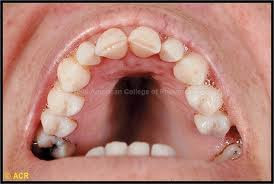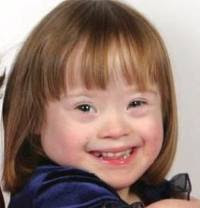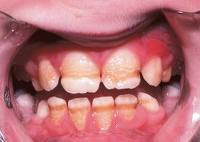


Kinky, course and/or curly hair is present at birth in 80% of people with TDO. Only 46% of the individuals with TDO and kinky, course and/or curly hair at birth retain this phenotype after infancy. There is an increased cranial thickness. The loss of visible mastoid pneumatization is the most common osseous feature seen in affected individuals (82%) and is relatively uncommon in unaffected people (8%).
Oral Manifestations: While all individuals with TDO appear to have enamel hypoplasia and taurodontism, the expression of these traits is highly variable. The teeth appear discolored in 76% of the affected individuals while the remaining affected individuals have teeth of normal color. Enamel alteration in people with TDO ranges from being extremely thin and/or rough and pitted to being of normal color and only slightly decreased thickness.
Treatment: Symptomatic.
Dental Considerations: Treatment depends on severity of defects and esthetic demands of patient and may include full coverage restorations.





































